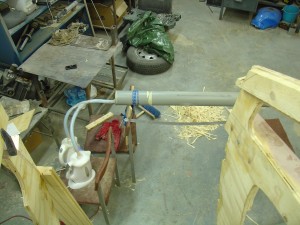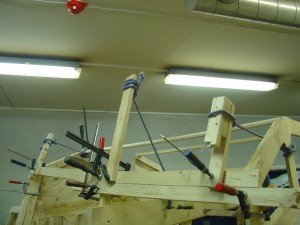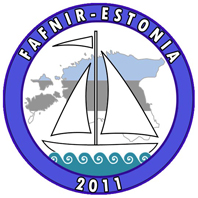Time travels without visa, we don’t. Our border passes are made of little victories, such as epoxying a bulkhead in place or completing a transom design. Little steps make a big journey. It will soon be a year since we started our blog here. We ought to throw a party.. But lets not pop the can yet – straight to business. Tried steaming some very short ribs for our cabin section. Rad curves are needed and solid wood is not up to it. Our pine snapped, even after bathing in hot steam. The new approach will be to make the cabin stringers out of plywood. This has already been done, pictures will follow. Joosep is working on the bow transom bulkhead, which is now finally taking shape. Soon starting on the interior, perhaps next week. Here is the traditional, but always bliss photo evidence:
- The good side of having a 5 m long steaming tube made of 3 sections is that we can easily shorten it. Here is a 2 m segment that I used for steaming the cabin stringers. Initial warmup time is naturally shorter for a shorter tube, which is a timesaver.
- The steaming setup, with the siamese kettles going about their business. I fixed the pipe to the chair with rope. There is a plywood support wedged between the backrest and the pipe, giving a tilt for the condensated water to flow out and also acting as a pipe fixer.
- Looks like a Roman war machine. Which it almost is if the forces were to be released in your face, which is about the convenient height for the setup. Used very many clamps, ropes and even a go-cart motor to pull the stringer into place. The whole boat warped and I had to use support structures around the boat to keep it grounded. Later, the wood sprung back too much to be anything other than sinister. Thus the plan was dropped and now these cabin roof-deck transition stringers are made of laminated plywood. More pictures of that very soon.
- View ahead. The stern “deck” has five stringers in total, three seen here. The cabin entrace is bordered by three stringers, one of which has not been installed yet.





